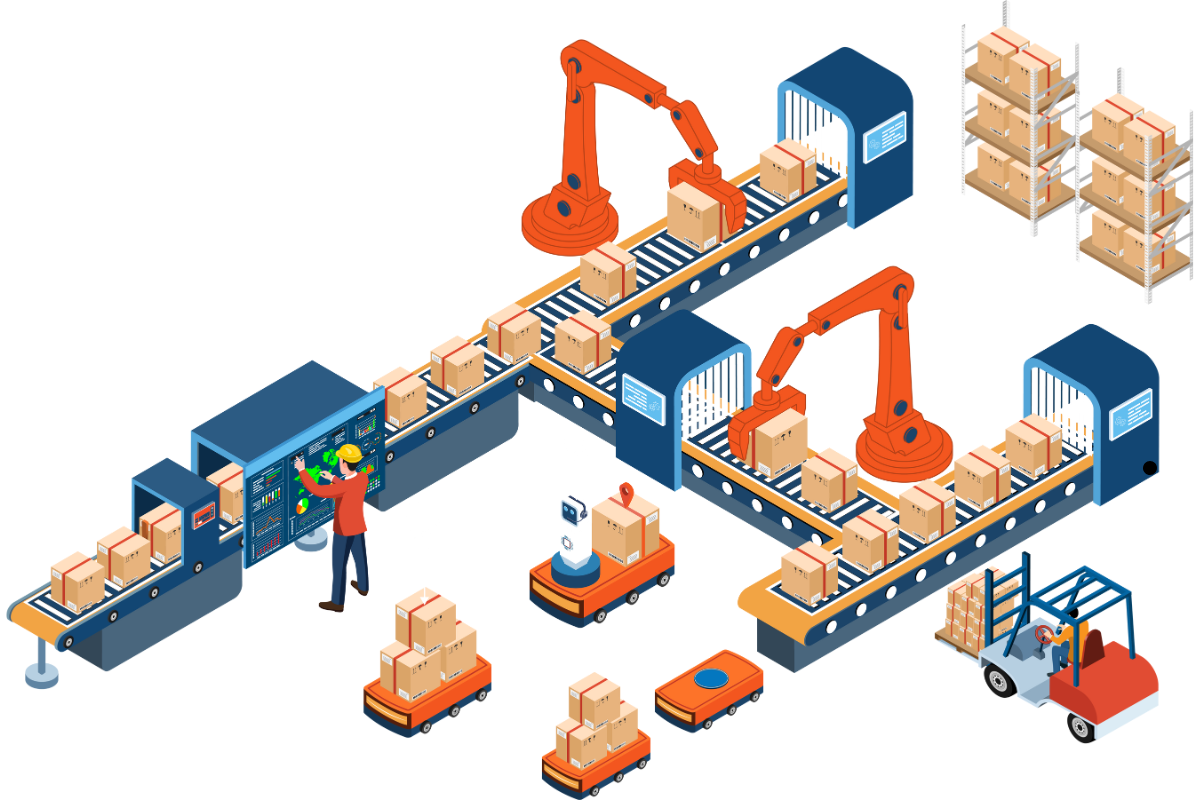
30 Jul Why Robotic Automation is a Smart Investment in 2025
Why Robotic Automation is a Smart Investment in 2025
In 2025, the global industrial landscape is undergoing a powerful transformation, and robotic automation stands at the forefront of this change. From advanced manufacturing units to warehousing and logistics, businesses are increasingly adopting robotics not just to keep up with the competition but to lead with efficiency, precision, and resilience. The integration of robotics into core operations is no longer reserved for large corporations—today, even small and mid-sized companies are recognizing the long-term value and strategic advantage that automation provides.
The demand for faster production, reduced errors, lower operating costs, and the need for workforce safety has made robotic automation a smart and future-ready investment. With rapid advancements in artificial intelligence, machine vision, collaborative robotics, and edge computing, robots in 2025 are more intelligent, more flexible, and more affordable than ever before. These technologies are enabling businesses to automate complex processes, gain real-time insights, and deliver consistent quality—all while reducing reliance on manual labor.
Labor shortages and the rising cost of skilled workforce have further accelerated the shift toward automation. Robots can work continuously with minimal supervision, delivering consistent productivity regardless of shift timings or workforce availability. Additionally, smart robotic systems contribute to safer and cleaner work environments, as they take on hazardous or ergonomically challenging tasks, thereby lowering workplace injury rates and boosting employee morale.
Moreover, robotic automation aligns with the growing emphasis on sustainability and energy efficiency. By reducing waste, optimizing resource utilization, and enabling precision-driven manufacturing, automation supports greener and more responsible operations.
For organizations looking to scale, meet demand fluctuations, and stay competitive in a rapidly changing economy, investing in robotic automation in 2025 is not just a technological upgrade—it is a strategic move that secures operational efficiency, agility, and growth potential for years to come.
As we step deeper into the age of digital transformation, robotic automation has moved from a futuristic concept to a critical component of modern industry. In 2025, businesses across manufacturing, logistics, healthcare, and even small-scale enterprises are realizing that investing in robotic automation is no longer a luxury — it’s a strategic necessity. Here’s why robotic automation is a smart investment this year:
1. Boost in Productivity and Efficiency
Robotic systems operate 24/7 without fatigue, drastically increasing production rates and reducing downtime. Unlike human workers, robots can maintain consistent speed and accuracy, ensuring that repetitive tasks are completed with precision. This results in higher throughput, reduced cycle times, and more efficient operations, making your business more competitive in fast-paced markets.
2. Reduction in Operational Costs
Though the upfront investment may seem high, the return on investment (ROI) of robotic automation is compelling. Robots help reduce labor costs, minimize waste, and prevent costly errors or accidents. In many industries, automation has shown a payback period of just 1 to 3 years. With decreasing robot prices and increasing capabilities, 2025 presents an ideal time to invest.
3. Improved Product Quality and Consistency
Human error can lead to product defects and quality issues. Robotic automation ensures high levels of repeatability and standardization, which significantly improves product quality. With integrated vision systems and AI-based quality checks, robots are now capable of performing precise inspections and real-time adjustments, reducing scrap and rework.
4. Addressing Labor Shortages
One of the pressing challenges faced by industries today is the shortage of skilled labor. As older workers retire and fewer younger workers enter manufacturing or physically demanding jobs, robotics steps in to fill the gap. By automating tedious and dangerous tasks, companies can reallocate human workers to more creative, supervisory, or decision-making roles.
5. Scalability and Flexibility
Modern robotic systems are modular and adaptable. Whether you’re scaling your business or shifting production to meet changing demand, robotic systems can be reprogrammed, relocated, or integrated with new machinery. In 2025, collaborative robots (cobots) and mobile robotic platforms make it easier for small and medium enterprises to adopt automation without extensive infrastructure changes.
6. Enhanced Data Collection and Insights
With Industry 4.0 and IoT integration, robots do more than just move parts—they collect real-time data on performance, maintenance needs, and product tracking. This data-driven environment empowers businesses to make smarter decisions, predict machine failures, and optimize workflows.
7. Strengthened Workplace Safety
Robots are ideal for taking on hazardous, dirty, or physically intense tasks. This significantly lowers the risk of workplace injuries and related compensation costs. By creating a safer work environment, companies also benefit from better employee morale and reduced absenteeism.
8. Environmental Sustainability
Robotic automation promotes sustainability by optimizing energy usage, reducing material waste, and supporting eco-friendly manufacturing practices. Smart robots can precisely control processes to minimize excess and support lean operations, aligning with the growing emphasis on environmental responsibility in 2025.
Conclusion: Future-Proofing Your Business
In an era defined by innovation, agility, and data-driven decision-making, robotic automation isn’t just about reducing costs — it’s about future-proofing your operations. Companies that invest in automation today position themselves for long-term growth, resilience, and leadership in their respective markets.
With advancements in AI, machine learning, and affordable robotics, 2025 is the year to make the shift. Whether you’re a large manufacturer or a small business looking to scale, robotic automation offers a smart, strategic, and sustainable path forward.

No Comments